The property tax system in Ramsey County combines accuracy, adaptability, and community benefit into a surprisingly effective framework. Every homeowner, business owner, and real estate investor in the county faces this financial responsibility twice a year—once in the spring and once in the fall—but how they handle it frequently determines whether the experience feels like regular upkeep or financial instability.
With an average property tax rate of 1.24%, it is substantially higher than the 0.90% national average. This high rate is a reflection of the demand for infrastructure in St. Paul and the surrounding areas as well as its desirability. That adds up to thousands of dollars a year for many, particularly during periods of high property values like the ones that have occurred recently. However, the return is noticeably high when compared to services like parks, schools, and emergency response.
| Detail | Information |
|---|---|
| County Name | Ramsey County, Minnesota |
| Average Property Tax Rate | 1.24% |
| First Half Tax Due Date | May 15 |
| Second Half Tax Due Date | October 15 (Nov 17 for manufactured homes) |
| Online Payment Portal | https://www.ramseycounty.us/property-home/property-tax |
| Payment Options | Online, Phone, Mail, Drop Box, Bill Pay |
| Penalty Waiver | One-time waiver per parcel every 10 years |
| Phone Payment Number | 800-2PAY-TAXS (Jurisdiction Code: 4404) |
| Abatement Available | For medical emergencies or exceptional hardships |
| Tax Lookup Tool | Available via the official Ramsey County Property Lookup website |
The way payments are set up makes them easy to handle. May 15 is the deadline for the first installment, and October 15 is the deadline for the second. The second half deadline for manufactured homes has been slightly extended to November 17. Full payment must be made by the first due date if the total tax amount is $100 or less for real property or $50 or less for personal property. This minor detail policy frequently surprises new property owners.
However, Ramsey County has significantly enhanced its offerings in the area of convenience. Residents can search parcels by address or number, view payment history, and process payments instantly by using the online property tax and value lookup system. The integration with US Bank guarantees that every transaction satisfies federal financial security standards, and the portal is incredibly clear.
A toll-free number, 800-2PAY-TAXS, is available for people who are more accustomed to using phones. Users follow the voice instructions to finish the transaction after being prompted to enter Jurisdiction Code 4404. The system is very effective and provides confirmation receipts instantly, both on-screen and through email upon request.
The county’s strategy is especially advantageous because of its one-time penalty waiver policy. Every ten years, homeowners are allowed to ask for forgiveness of a late payment once per parcel. This is not merely a flimsy feature. It can save hundreds of dollars in needless fines for someone who is in charge of several properties or is dealing with unforeseen circumstances, such as a family emergency or job loss. Requests for waivers are accepted from May 16 to October 15 for the first half and from October 16 to December 20 for the second half.
Due to a hospital stay, a friend of mine who has been a Roseville homeowner for a long time missed his May payment. After a brief review, the county waived his penalties, and that insignificant act made a big impression. It made him realize that this was a local system created with actual people in mind, not just a machine collecting fees.
In addition to waivers, Ramsey County also considers requests for abatement from individuals who are experiencing extraordinary hardship. These may include fines, interest, or other costs. The office of the Auditor/Treasurer considers each case carefully, but approval is not assured. In one case, after missing two payments, a single mother receiving chemotherapy filed a request for abatement. In addition to removing her penalty, the county provided her with information about unidentified relief programs.
Another essential component is transparency. In addition to displaying your debt, the property lookup tool provides information about your home’s value, the tax classification, and any annual changes. When it comes to budgeting or determining rent rates, this is immensely flexible for landlords. Prior to signing on the dotted line, it serves as a potent reference for prospective buyers.
Unfortunately, the penalties are severe but predictable if they are triggered. They apply to penalties first, followed by taxes, and start to accrue the day after the due date. There are no unpleasant surprises with this approach. However, being on time is the best way to avoid this system. There’s even a reminder email subscription option for those who like a little automation; it’s easy, discrete, and efficient.
Although there have been technological advancements in Ramsey County’s property tax system, the core principles of community accountability have not changed. Local infrastructure, libraries, first responders, and schools are all supported by taxes. You’re investing in safer intersections, better classrooms, and cleaner parks—you’re not merely sending money to an anonymous organization.
These procedures also apply to public figures and celebrities who own real estate in this area. They all use the same system, whether it’s a television personality’s home in St. Paul or a sports figure’s lakefront estate. It unites neighborhoods with different levels of wealth through a common civic framework, making it an equalizer—at least in the process.
Notably, the system now offers more payment options. Residents still have the option of paying their bills through financial institutions, using secure drop boxes, or by mail in addition to online and over the phone. This flexibility accommodates the wide range of comfort levels among the county’s residents, from senior homeowners to tech-savvy professionals.
Penalties do exist, but so do avenues for atonement. Installments are accepted for partial payments. The office does not close its doors if someone is late. Rather, it provides referrals to relief programs and structured payment schedules. It’s a measured strategy that recognizes financial strain without enforcing it right away.


